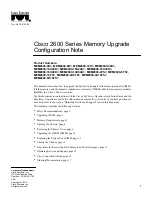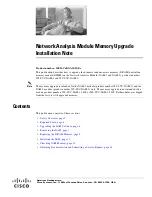
CSMCOM
3
new file on the hard disk. For each file the message: 'xxxxxx: writing to file
rootnn.dat' appears, where xxxxxx is the location of the start of the file.
If CSMCOM finds a file that contains a program, it jumps over the program
and displays 'no data found in this area'.
This option can be aborted by pressing the Esc key.
3.3 U – Collect Uncollected Data Files
This option operates in a similar way to the A option, with the exception that it
starts reading data from the position of the storage module dump pointer. This
pointer is used to mark where data was last collected from. It is automatically
moved after successful collection of data by the A or U options of CSMCOM.
Thus the U option can be used to collect any new data files stored in the card
since data was last read using CSMCOM.
3.4 N – Collect Newest Data File
This option also works in a similar way to the A option with the exception that
it collects just the latest file in the card, and the data is written to a specific file
rather than one specified with a root filename.
3.5 L – Collect One Data File Starting at a Specified Location
This option stores data to a specific file, as with the N option, but CSMCOM
first asks for the starting location of the file. This option is mainly used for
recollecting old data that has already been collected, or to recover data from a
corrupted card.
The L option performs only a limited check on the validity of the start location
you enter. It is possible, for example, to request data from any part of the card,
including an empty area. The start location should point to the first data value
in the file rather than the filemark that precedes it.
3.6 P – Collect All Program Files
The P option collects all datalogger programs that have been stored in the card.
CSMCOM first asks for a root collection filename. Enter a valid name such as
'ROOT'. CSMCOM then checks which program areas contain programs and
reads the programs out to disk. Programs 1 to 8 are stored in files with the
numbers 1 to 8 appended on the end of the prefix of the name. The suffix is set
to .DLD, e.g. for a root name of ROOT, the files would be named
ROOT1.DLD, ROOT2.DLD and so on.
As the program is being read from the card a '.' is displayed for every 100
characters read from the card.
When a program is collected a checksum verification is done. If no errors
occur 'OK' is displayed; otherwise a warning is shown. CSMCOM attempts up
to three retries if an error occurs.
Summary of Contents for CSM1
Page 20: ...CSM1 Card Storage Module 14 This is a blank page...
Page 22: ...This is a blank page...
Page 32: ...This is a blank page...
Page 33: ...CSMCOM SOFTWARE...
Page 34: ...This is a blank page...
Page 48: ...This is a blank page...
Page 49: ...SMCREAD SOFTWARE...
Page 50: ...This is a blank page...
Page 68: ...Appendix A PCMCIA Driver Software Notes A 6 This is a blank page...
Page 73: ...This is a blank page...
















































